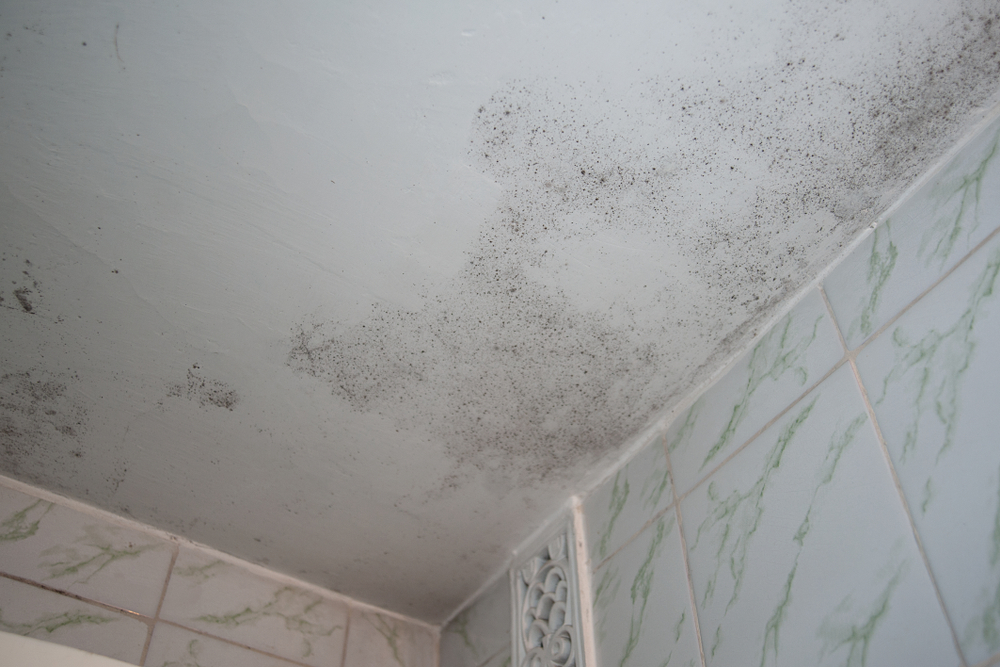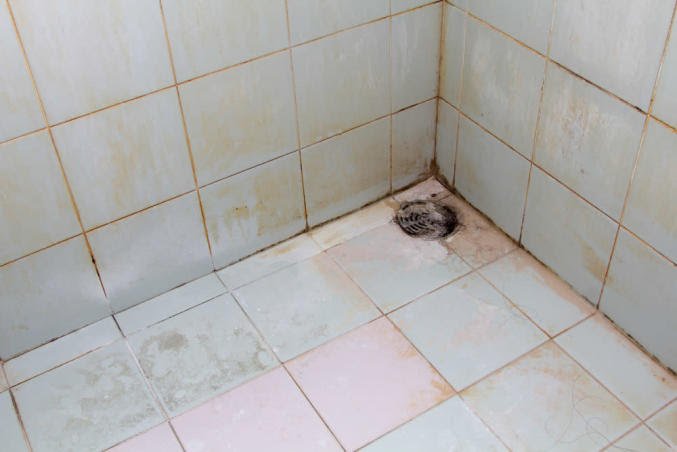The article listed below about How to Repair and Prevent Bathroom Water Damage? is extremely fascinating. Read on and draw your own assumptions.

Water damage typically takes place in the restroom due to the water utilized day-to-day. Sometimes, the damages could be a little mold and mildew from the shower. Other times, it's enormous damages on your flooring. Whatever it is, it is always good to understand the cause as well as stop it prior to it takes place.
This overview will go through some of the common reasons for water damage in the bathroom. We will also analyze what you can do to stop these reasons from harming your restroom. Let's dive in.
5 Common Root Causes Of Water Damage in Shower Rooms
These are the typical reasons you would certainly have water damage in your shower rooms as well as how you can detect them:
Ruptured or Leaking Pipelines
There are many pipelines bring water to various parts of your shower room. Some pipes take water to the commode, the sink, the taps, the shower, and also numerous other locations. They crisscross the little location of the bathroom.
Every now and then, these pipelines could obtain rusty and also ruptured. Other times, human action might trigger them to leak. When this takes place, you'll locate water in the corners of your restroom or on the wall.
To identify this, watch out for gurgling wall surfaces, molds, or mold. Call a professional emergency situation plumbing to repair this when it happens.
Fractures in your wall surface tilesv
Shower room wall surface tiles have been particularly made for that purpose. They safeguard the wall from moisture from people taking showers. Nevertheless, they are not undestroyable.
Sometimes, your washroom wall floor tiles crack and allow some dampness to permeate right into the wall surface. This could potentially damage the wall surface if you do not take any kind of activity. If you see a split on your wall surface ceramic tiles, fix it promptly. Do not wait until it destroys your wall surface.
Overruning bathrooms as well as sinks
As humans, occasionally we make mistakes that can cause some water damage in the shower room. For example, leaving your sink faucet on might trigger overruning and damage to various other parts of the washroom with moisture.
Likewise, a faulty bathroom might create overflowing. For example, a broken bathroom manage or various other parts of the tank. When this occurs, it might damage the flooring.
As quickly as you observe an overruning sink or commode, call a plumbing technician to help take care of it instantly.
Roofing system Leaks
Occasionally, the problem of water damage to the restroom may not originate from the shower room. For example, a roof leak can cause damage to the restroom ceiling. You can find the damages done by considering the water spots on the ceiling.
If you find water spots on your ceiling, examine the roof covering to see if it's harmed. Then, call an expert to aid solve the issue.
Excess Dampness
It's amazing to have that long shower and sprinkle water while you dance around and act like you're performing, but sometimes these acts can create water damage to your washroom.
Spraying water around can cause water to head to edges as well as form molds. See exactly how you spread out excess dampness around, and also when you do it, clean it up to prevent damage.
Conclusion
Water damage to your restroom can be annoying. Nonetheless, you can handle it if you protect against several of the causes mentioned in this overview. Call an expert emergency situation plumber if you notice any kind of extreme damages.
How to Repair a Water-Damaged Wall in the Bathroom
All you need to know to repair bathroom wall water damage – from identifying the water source to finishing the repair professionally. If you don’t act quickly to resolve a water damage problem, you could find that it develops into a mold issue and/or cause structural damage to your home. Follow this guide to repair your bathroom before it's too late.
All you need to know to repair bathroom wall water damage
Water damage is a common household problem, and one that, if left unrepaired, can quickly lead to structural problems and health issues. The two most likely rooms where water damage may occur is the bathroom and the kitchen – where water is used often and there is high humidity.
What is water damage?
It is easy to think of water damage as caused by a flood or leaking tap or burst water pipe. However, when water damage is assessed, there are three main categories into which water falls (as classified by the American National Standards Institute). These categories are defined as:
Category 1 Water – ‘Clear Water’
This is sanitary water. There is usually no major threat to health by washing with this water, drinking it, or inhaling if it is streaming. Most water that enters your home will be category 1 water, while most water leaving your home will be either category 2 or 3 water. It may also come from melting snow, rainwater and water tanks.
Damage caused by this type of water can usually be repaired or restored, though this doesn’t mean that there are no potential health issues.
Category 2 Water – ‘Grey Water’
This is contaminated water – sometimes considerably so – and will cause illness if consumed or if it comes into contact with your skin. Water damage in this category is often caused by overflows from toilet bowls, and damage to washing machines and dishwashers. While damaged items might still be repaired or restored after damage by grey water, it is more difficult and more expensive to do so.
If the water damage in your home has been caused by grey water, it is advisable to have repairs made by professionals.
Over time, grey water will deteriorate and become black water.
Category 3 Water – ‘Black Water’
Category 3 water, also known as black water, is highly contaminated and a great risk to health. This may contain raw sewage, heavy metals, and other toxic substances. It will smell terrible.
If this is the water that has caused damage in your bathroom, do not touch it. Stop the water flowing if possible, seal the room and call the experts: it really isn’t worth the risk of ill health and disease that could be fatal. It is very unlikely that items can be repaired or restored if they have been damaged by black water.
https://www.porterscleaning.com/blog/how-to-repair-a-water-damaged-wall-in-the-bathroom/

How to Repair a Water-Damaged Wall in the Bathroom
All you need to know to repair bathroom wall water damage – from identifying the water source to finishing the repair professionally. If you don’t act quickly to resolve a water damage problem, you could find that it develops into a mold issue and/or cause structural damage to your home. Follow this guide to repair your bathroom before it's too late.
All you need to know to repair bathroom wall water damage
Water damage is a common household problem, and one that, if left unrepaired, can quickly lead to structural problems and health issues. The two most likely rooms where water damage may occur is the bathroom and the kitchen – where water is used often and there is high humidity.
What is water damage?
It is easy to think of water damage as caused by a flood or leaking tap or burst water pipe. However, when water damage is assessed, there are three main categories into which water falls (as classified by the American National Standards Institute). These categories are defined as:
Category 1 Water – ‘Clear Water’
This is sanitary water. There is usually no major threat to health by washing with this water, drinking it, or inhaling if it is streaming. Most water that enters your home will be category 1 water, while most water leaving your home will be either category 2 or 3 water. It may also come from melting snow, rainwater and water tanks.
Damage caused by this type of water can usually be repaired or restored, though this doesn’t mean that there are no potential health issues.
Category 2 Water – ‘Grey Water’
This is contaminated water – sometimes considerably so – and will cause illness if consumed or if it comes into contact with your skin. Water damage in this category is often caused by overflows from toilet bowls, and damage to washing machines and dishwashers. While damaged items might still be repaired or restored after damage by grey water, it is more difficult and more expensive to do so.
If the water damage in your home has been caused by grey water, it is advisable to have repairs made by professionals.
Over time, grey water will deteriorate and become black water.
Category 3 Water – ‘Black Water’
Category 3 water, also known as black water, is highly contaminated and a great risk to health. This may contain raw sewage, heavy metals, and other toxic substances. It will smell terrible.
If this is the water that has caused damage in your bathroom, do not touch it. Stop the water flowing if possible, seal the room and call the experts: it really isn’t worth the risk of ill health and disease that could be fatal. It is very unlikely that items can be repaired or restored if they have been damaged by black water.
https://www.porterscleaning.com/blog/how-to-repair-a-water-damaged-wall-in-the-bathroom/
We had been shown that write-up on How to Repair and Prevent Bathroom Water Damage? from a good friend on another web property. Liked our piece of writing? Please share it. Help other people find it. We recognize the value of reading our article about How to Repair and Prevent Bathroom Water Damage?.
We're your answer!